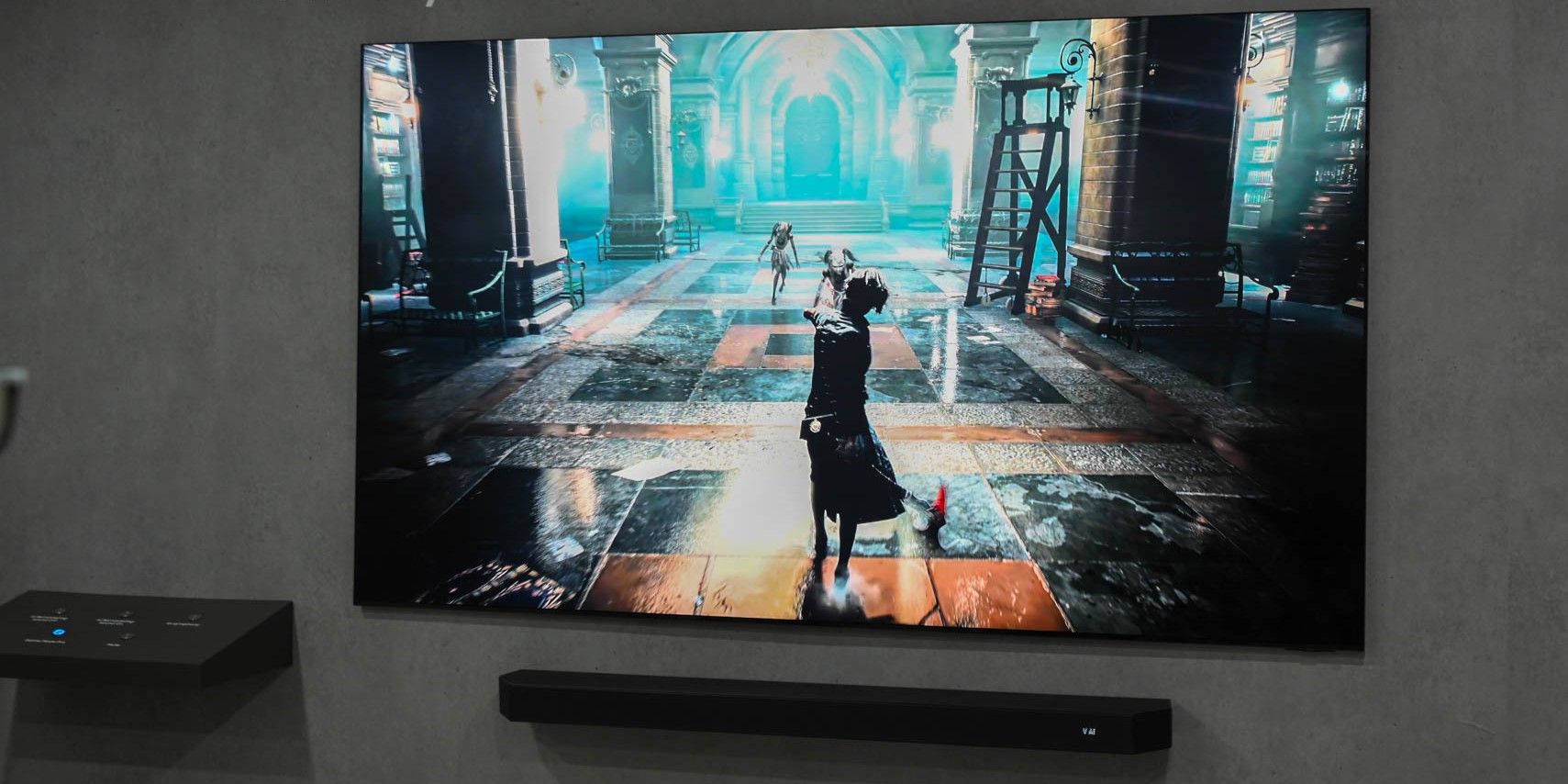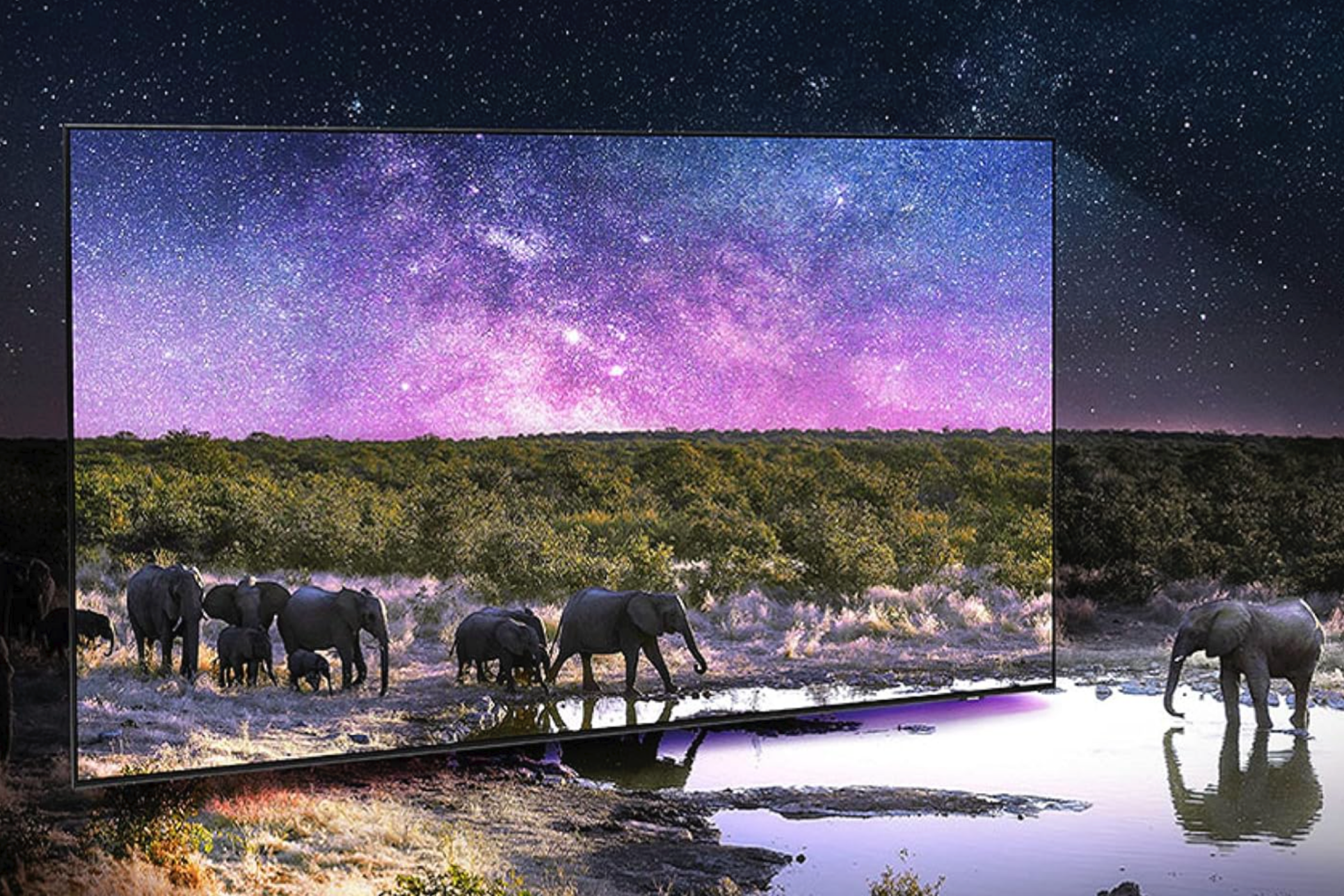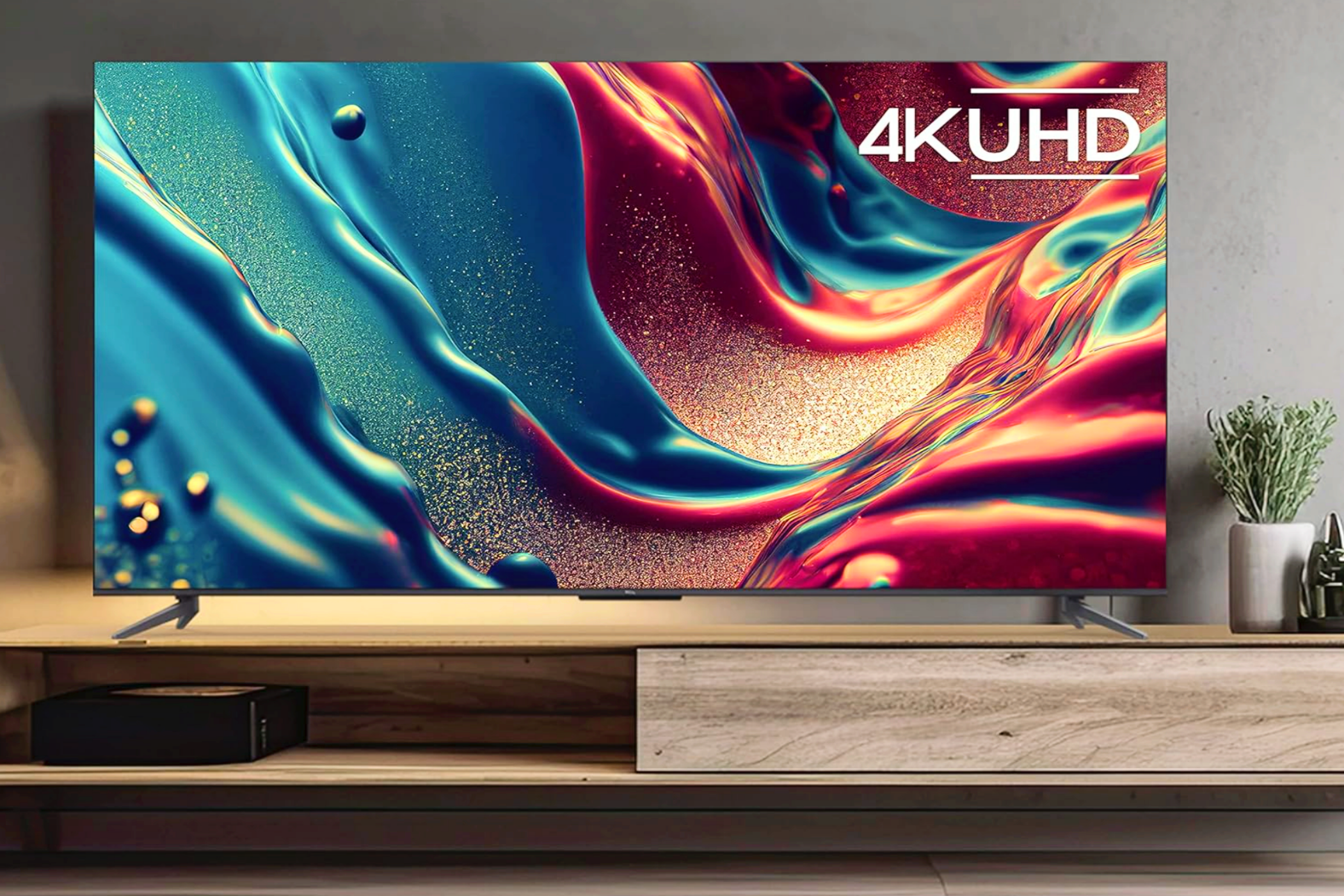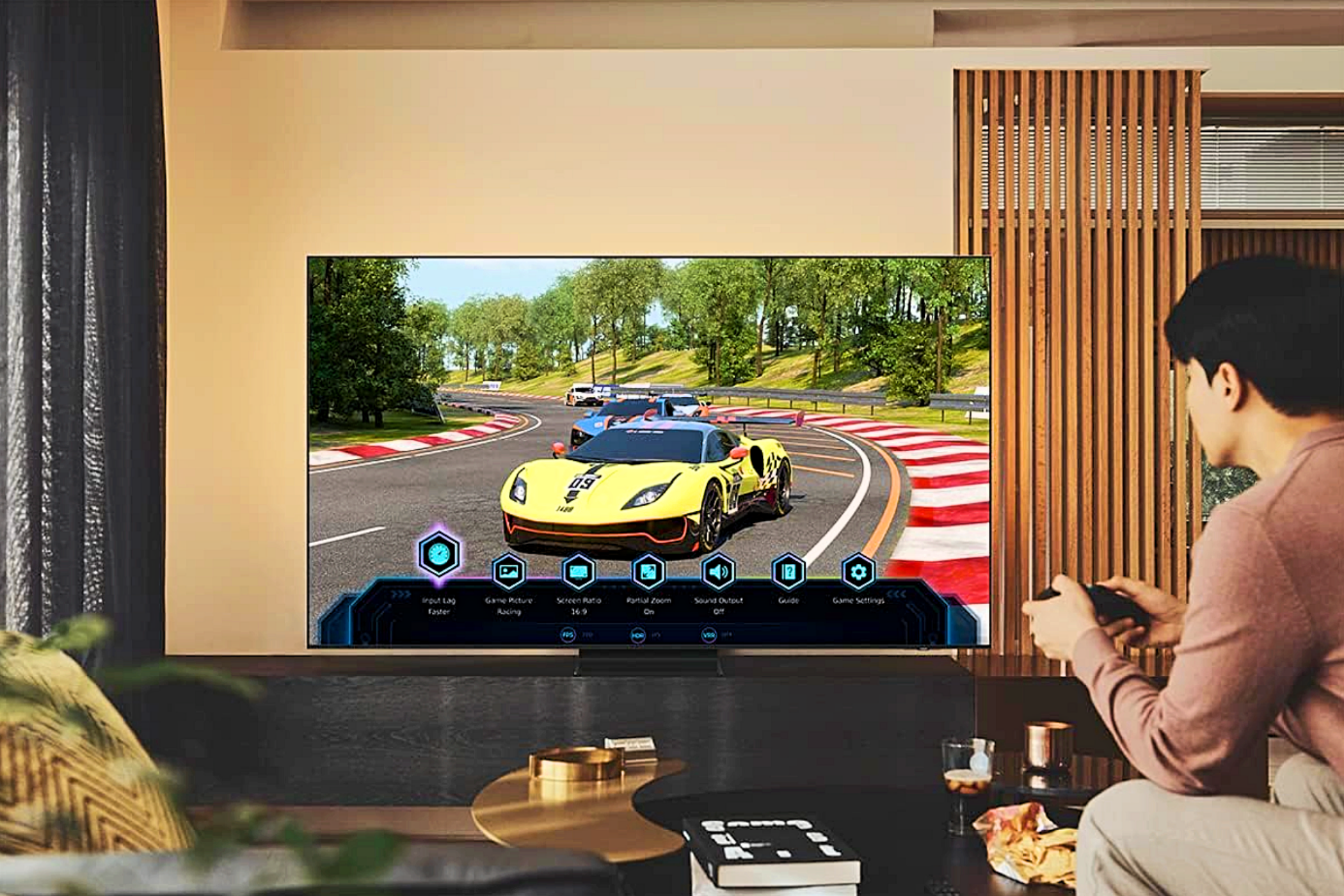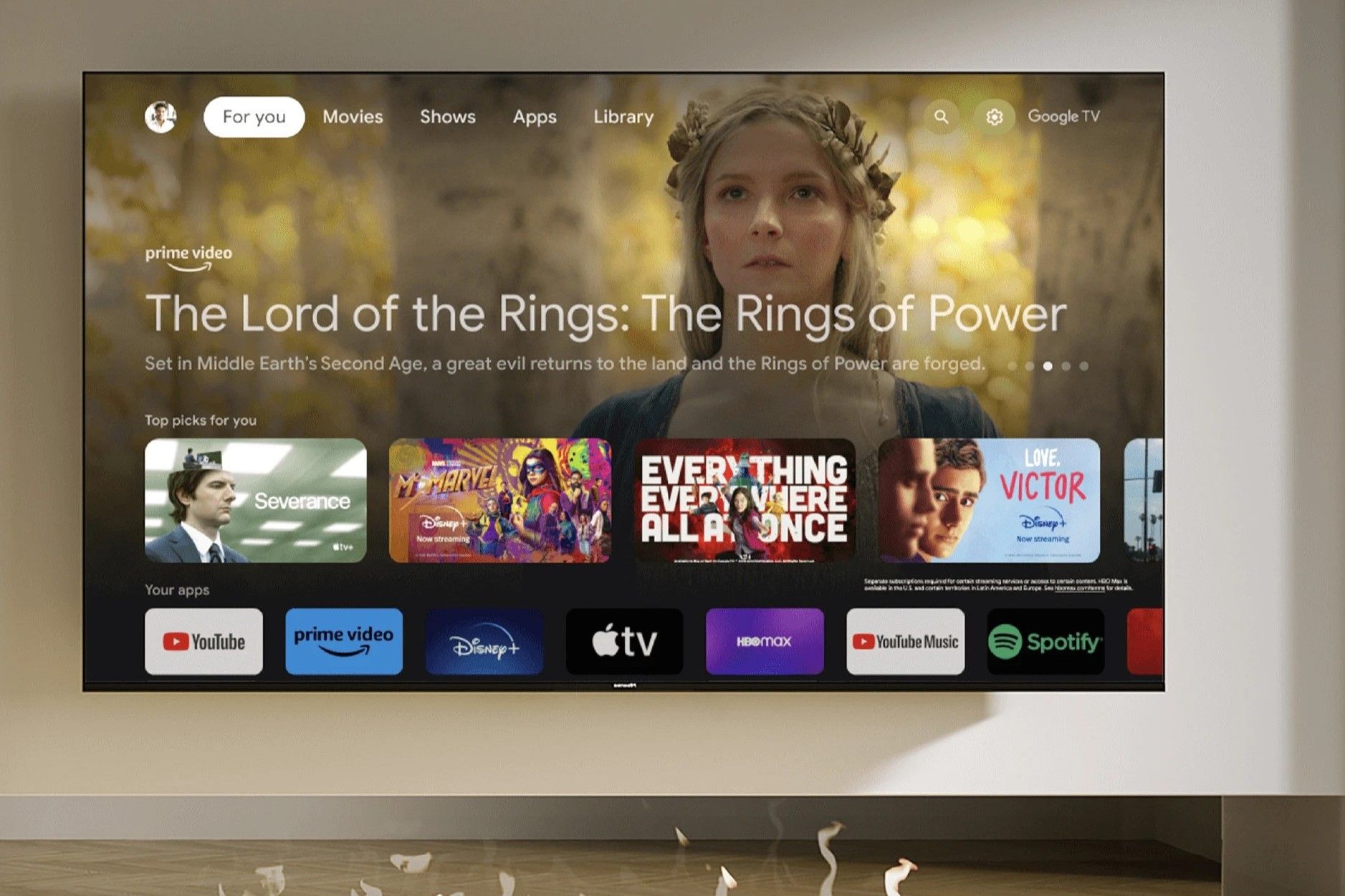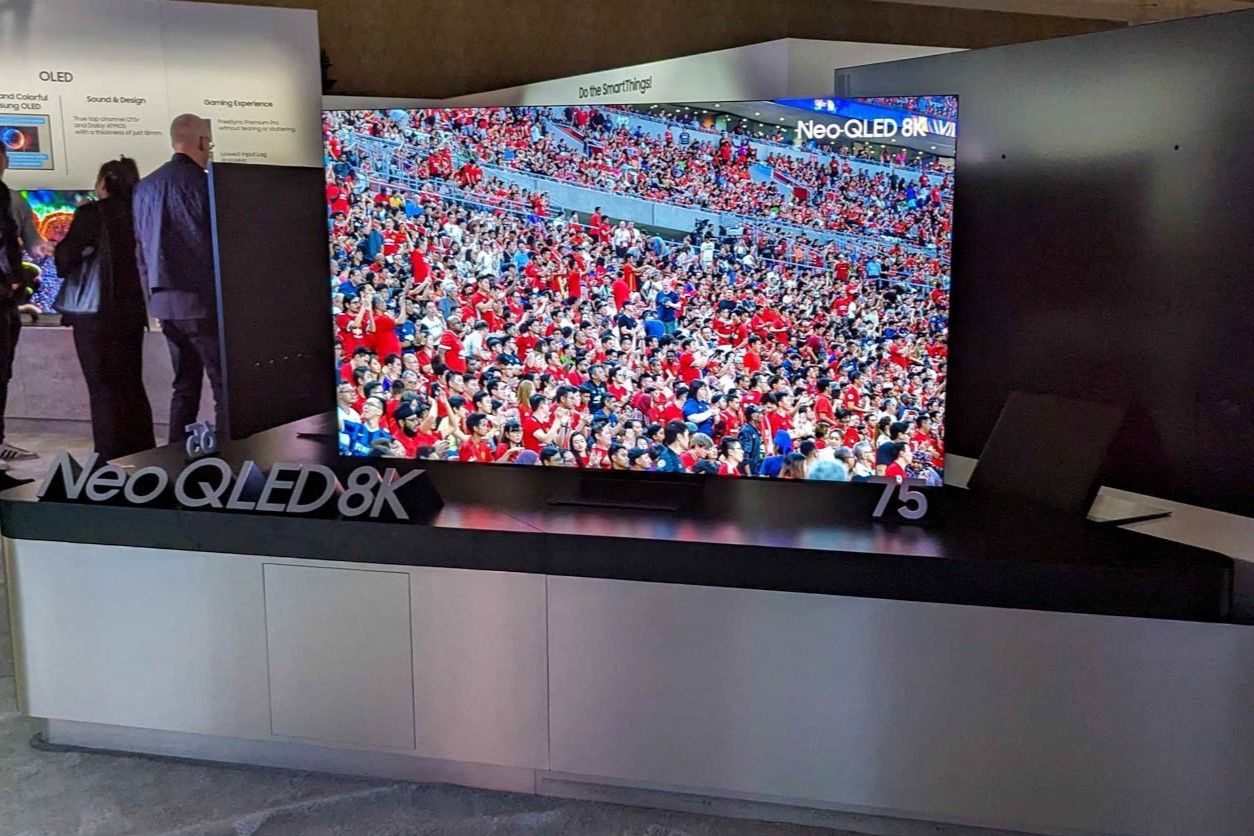Samsung brought us the first QLED TV back in 2013. Initially praised for their vibrant and accurate colors, quantum dot TVs have only advanced since then. They now offer even better color saturation along with high contrast ratios, superb brightness, and sleek designs.
Best QLED TV Overall: Samsung Neo 4K QN90C
The Neo 4K QN90C is the latest design from the QLED kings at Samsung. It offers some exciting improvements to its predecessor, the QN90B, with the most apparent being picture quality. In fact, it challenges the image standards set by OLEDs and beats them hands down for brightness.
The QN90C is available in sizes ranging from 43 inches to a colossal 85 inches. The smaller 43- and 50-inch models feature VA panels, while the larger screens switch to IPS-ADS, with the latter offering wider viewing angles, ideal for family movie night or when getting the neighbors around for Sunday football.
Combined with the TV’s superb peak brightness and outstanding anti-glare coating, you won’t need to worry about drawing the drapes on those sunny afternoons, either.
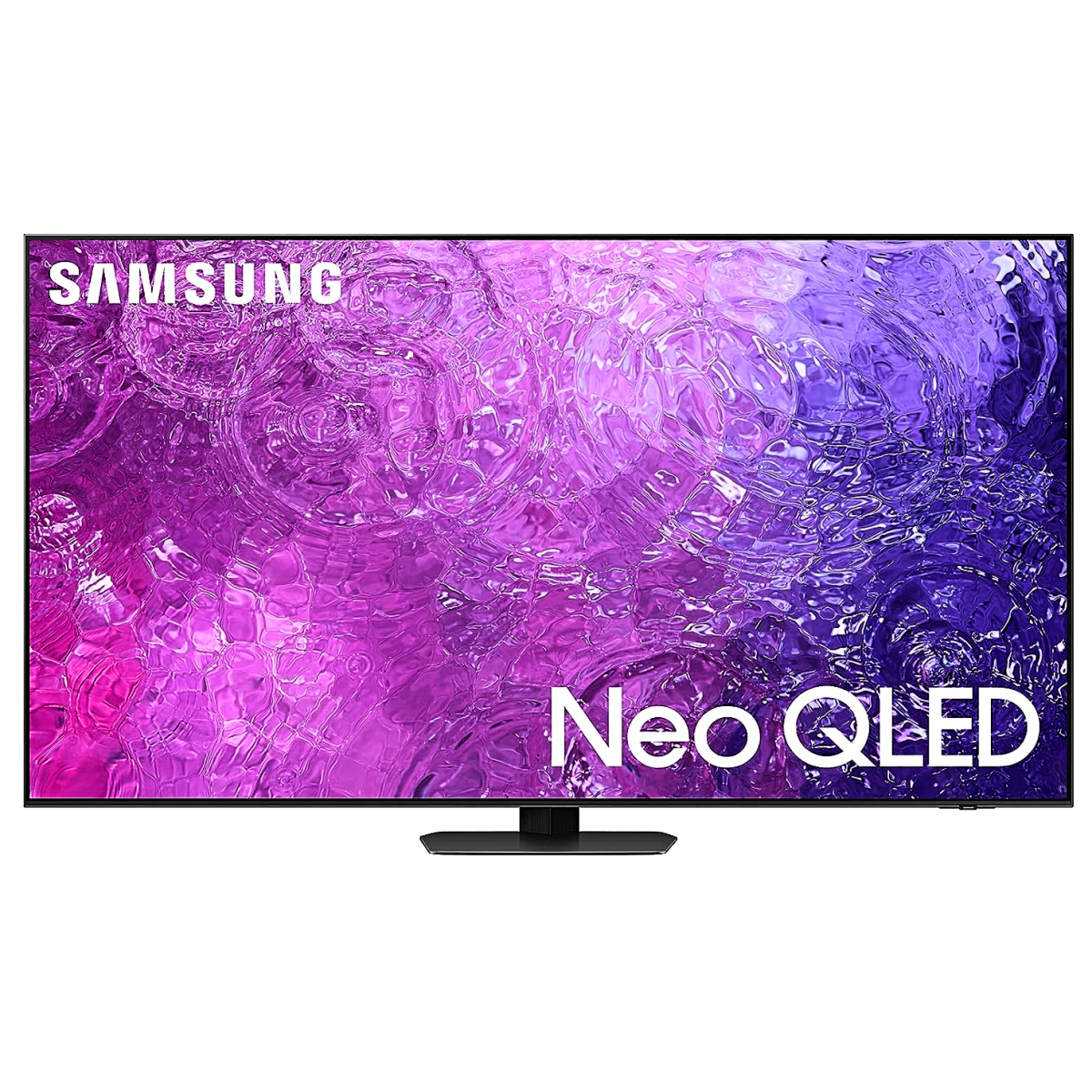
Samsung Neo 4K QN90C
The Samsung Neo 4K QN90C QLED TV offers outstanding image quality with its impressive peak brightness, superb local dimming, and accurate color. With features such as Object Tracking Sound Plus and Q-Symphony support, the audio also impresses, while four HDMI 2.1 ports add a cherry on top for gamers.
- Good motion handling
- Impressively deep blacks for a QLED TV
- Four HDMI 2.1 ports
- Object Tracking Sound Plus for improved spatial orientation
- Q-Symphony support for enhanced audio with Samsung soundbars
- Some backlight blooming
- The Tizen 7.0 interface takes some getting used to
- No Dolby Vision support
Best Budget QLED TV: TCL Q650G 4K
If you can forgo a few sophisticated features, you’ll get a real bargain with the TCL Q650G. Good brightness, surprisingly deep black levels, and a wide color gamut showcase what can easily be described as excellent value.
While it doesn’t feature HDMI 2.1, it is still a decent choice for gamers. You can get 120Hz gaming in Full HD while also enjoying an ultra-low input lag, pleasing those more concerned about performance than the best possible picture quality.
With its good response time, it’s also an excellent shout for sports fans. Motion blur when watching fast action is hardly noticeable. However, your friends around for the big game may have to squeeze together a little on the couch due to the TV’s average viewing angle.
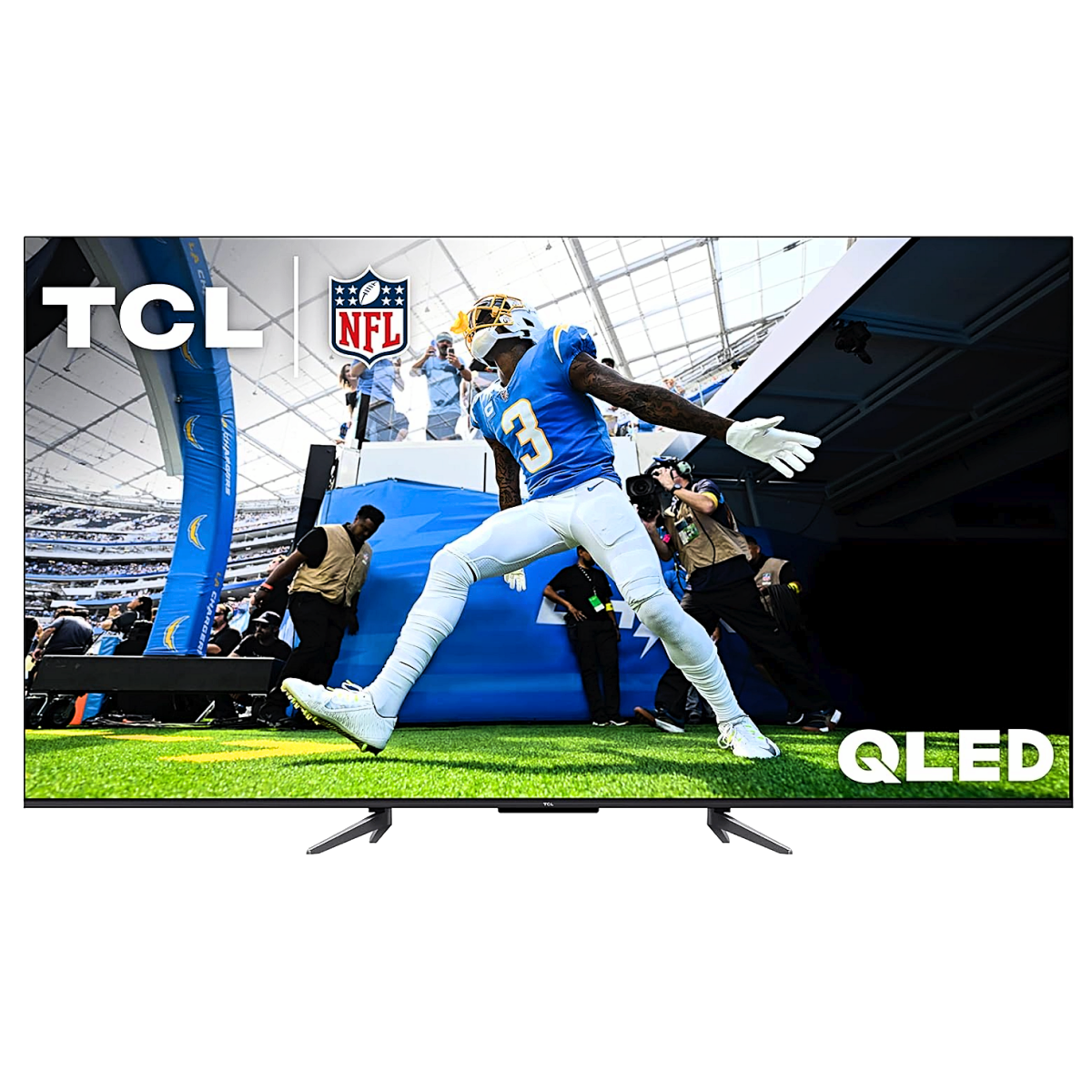
TCL Q650G 4K QLED
Whether you need a QLED TV to watch movies, play video games, or enjoy sports, the TCL Q650G is a top budget choice. While it may lack the performance and some more advanced features premium QLEDs offer, it still packs a punch and will please even the most diehard bargain hunters.
- Good upscaling to 4K
- Excellent peak brightness and reflection handling
- Dolby Vision and HDR10+ support
- VRR and ALLM
- Easy-to-use Google TV OS
- No local dimming
- Color needs to be calibrated out of the box
- Requires a soundbar
Best QLED TV for Gaming: Samsung Neo QLED 4K QN90B
There’s not a lot between the Samsung QN90B and its newer sibling, the QN90C. Both are excellent choices for gaming, but with this TV’s higher peak brightness and slightly cheaper price, gamers can play in brighter conditions, enjoy popping highlights, and save a few bucks in the process.
With its exceptionally fast response time and low input lag, support for all three VRR formats, and four HDMI 2.1 ports (one with eARC) for 4K/120Hz next-gen gaming, it’s an ideal choice.
However, movie buffs shouldn’t feel left out. With an incredible kaleidoscope of colors and superb local dimming delivering exceptional contrast, image quality is superior to most other QLED TVs.
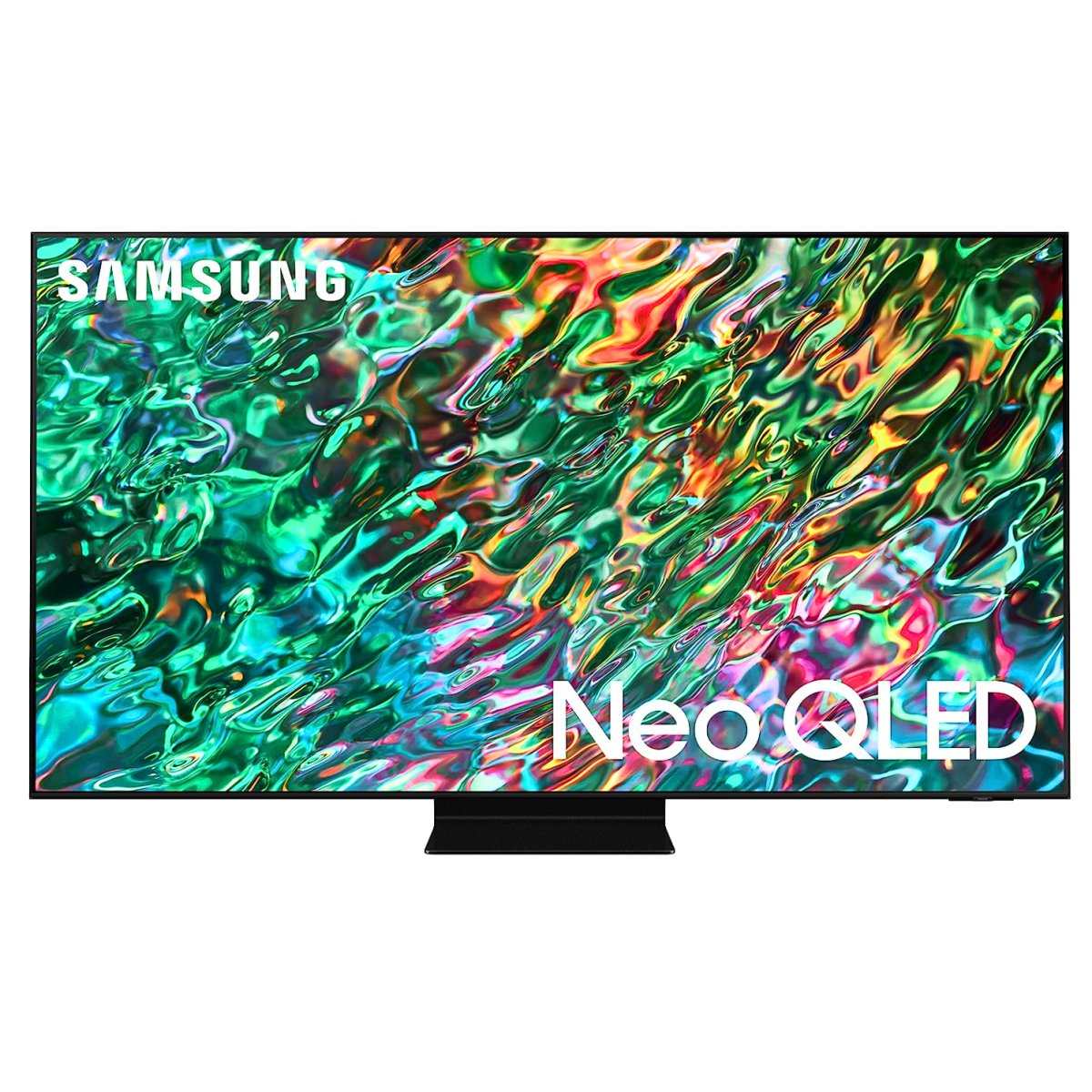
Samsung Neo QLED 4K QN90B
Like the QN90C, the Samsung QN90B is a superb choice for gaming. With all the necessary features, from HDMI 2.1 to a superbly low input lag, it’s a QLED TV built for gaming. With outstanding image quality delivered by high brightness, deep contrast, and abundant colors, it’s also a top 4K pick for watching HDR movies and shows.
- Uniform viewing angles
- Excellent glare handling
- Plenty of quality gaming features
- Good audio
- Wide range of display sizes
- No Dolby Vision or DTS support
Best QLED TV for Movies: Hisense U8K ULED 4K
While Samsung generally delivers the best QLED TVs, they only support the company’s proprietary HDR technologies, HDR10 and HDR10+. So, one advantage other QLED TV manufacturers have over Samsung is support for Dolby Vision content, which is widely regarded as the ultimate HDR format. If watching movies is your primary concern, you may want to consider this.
Not only does the Hisense U8K deliver pristine brightness, contrast, and color, but it also comes at a rather fetching price tag. And, if you do wish to splash out, there is a 100-inch option to get lost in when watching your blockbusters. Gamers, including Xbox Series X and PS5 users, can get in on the action, too, with 4K/120Hz support, VRR, and ALLM.
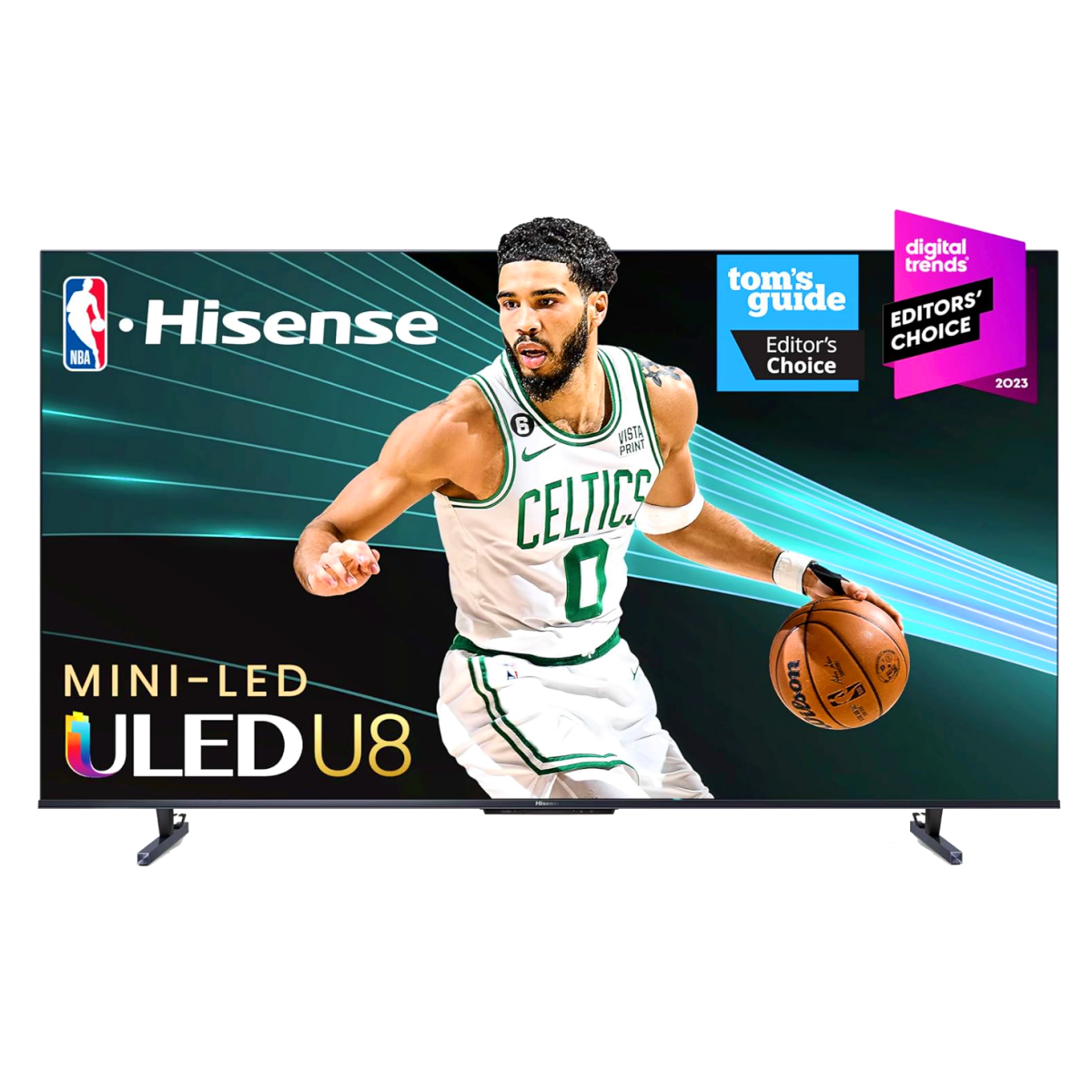
Hisense U8K ULED 4K
The Hisense U8K delivers some of the best image quality for movies a QLED TV can. And, to top it off, it’s available at a decent price. Movies and TV shows look stunning with the TV's deep contrast, vibrant, natural colors, and impressive peak brightness. If you really want to splash out on the ultimate movie experience, consider the exceptional 100-inch model for total movie immersion.
- Intuitive Google TV platform
- Dolby Vision IQ adjusts to ambient light
- Outstanding contrast
- Natural color and brightness
- Two HDMI 2.1 ports (one with eARC)
- Average viewing angle
Best 8K QLED TV: Samsung Neo QLED 8K QN900C
While there still isn’t too much content out there to watch on an 8K QLED TV, the upscaling delivered by the Samsung QN900C is truly outstanding. This TV delivers on everything, including stunning brightness, true-to-life color, highlight-popping brightness, deep contrast, and, of course, a level of detail that only 8K can provide. You also get fantastically wide viewing angles, so the whole family can enjoy movie night from anywhere in the room.
It’s available in two goliath sizes of 65- and 75-inch. However, the price is unsurprisingly high, and Dolby Vision support remains absent from all Samsung TVs.
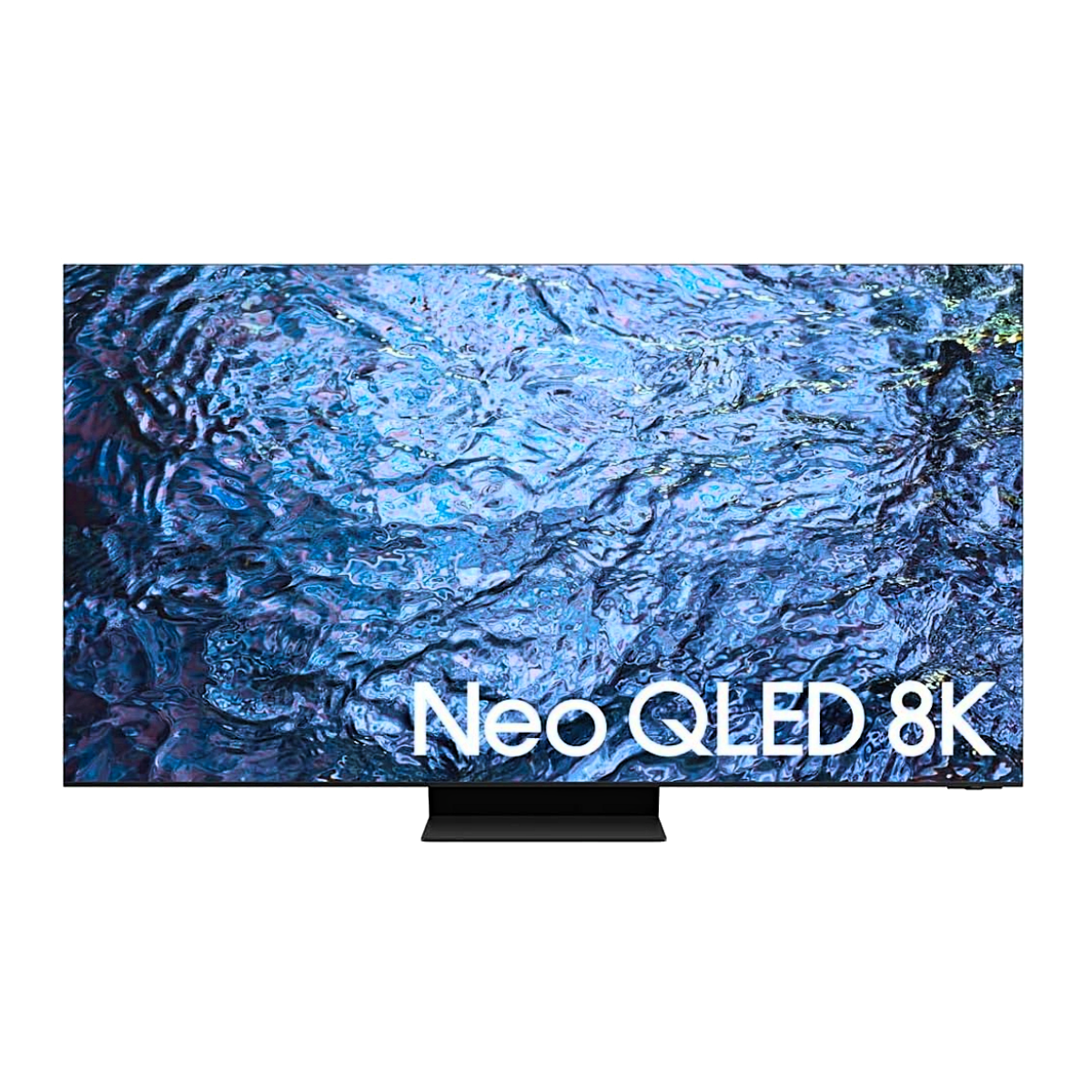
Samsung Neo QLED 8K QN900C
The Samsung QN900C delivers the ultimate picture quality in a QLED TV. With ever-improving upscaling, you can now watch 4K content in (almost) 8K detail. The jaw-dropping picture is simply stunning, with peak brightness, color, detail, and contrast without peers in the QLED world.
- Four HDMI 2.1 ports
- One Connect Box relieves cable clutter
- 90W multi-speaker system is impressive
- Object Tracking Sound for spatial audio
- Stunning, bezel-free, minimalist design
- No Dolby Vision
- Pricey
FAQ
Q: What is QLED?
QLED is an acronym for quantum dot light-emitting diode. It is a display technology used in TVs and a significant upgrade on traditional LED technology. Samsung is widely credited with bringing QLED technology to the consumer market.
QLEDs outperform LEDs thanks to their ability to produce a broader range of colors and hit higher peak brightness. These enhanced features guarantee an improved display, especially when watching HDR content. You also get better viewing angles, which is a considerable advantage in a home theater setup.
That said, they are more expensive than traditional LED TVs, and they can’t get near the black levels of OLED TVs.
Q: What is the difference between OLED and QLED?
Both are types of TV technologies. OLED is generally regarded as the superior tech, but there are many other factors to consider when choosing between OLED and QLED.
OLED TVs are generally more expensive than QLEDs. But they offer more natural colors and deliver superior black levels. This is down to the difference in technology. OLED stands for organic light-emitting diode. Each pixel is made of organic material and can be turned off completely. This is why OLEDs can achieve perfect blacks and, consequently, more impressive contrast and detail in dark scenes.
QLED TVs simply cannot compete with OLED technology when it comes to black levels. They also have a slower response time, can have more motion blur when watching sports or action sequences, and the viewing angles aren't as good. However, they do excel in various other aspects and can reach higher peak brightness, which is a significant advantage when watching in a bright room
Q: What is the difference between 4K and QLED?
4K is sometimes referred to as UHD or ultra-high definition. It isn’t a display technology at all, unlike QLED. 4K refers to the resolution of the TV. It’s a step up from Full HD and a step down from 8K. You can get QLED TVs with a 4K or higher resolution.
Q: Do QLED TVs suffer from burn-in?
The absence of burn-in is another QLED advantage. Burn-in can occur in OLED TVs when watching content with continuous static images, such as a sports channel logo. This is because individual pixels in OLED TVs emit their own light. On the other hand, QLEDs use backlights and layers of quantum dots to filter the light and create images and, therefore, don’t suffer from burn-in issues.
Q: How long will a QLED TV screen last, on average?
With a little care and attention, you can get more than a decade out of a QLED TV. However, when taking many factors into consideration, including usage and brand reputation, the average life expectancy is 7–10 years. Keeping your QLED TV in a well-ventilated area can go a long way to ensuring longevity, as will regular cleaning.

